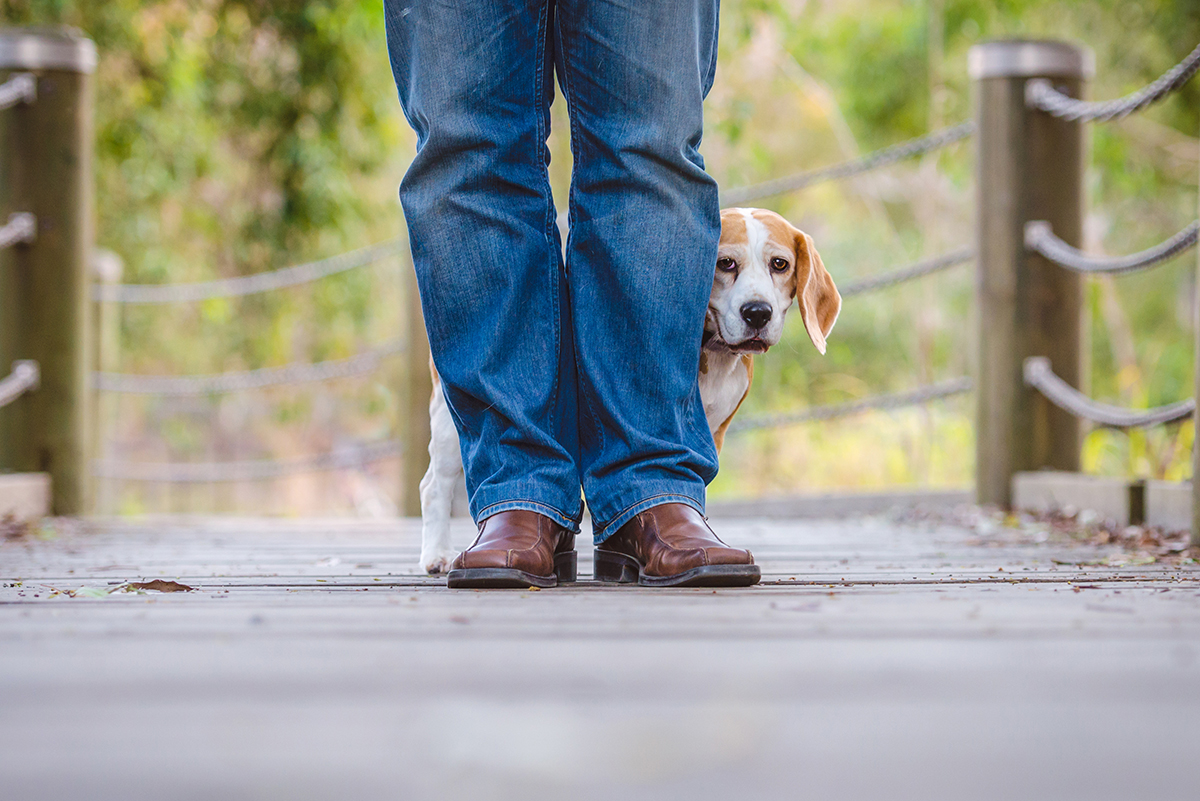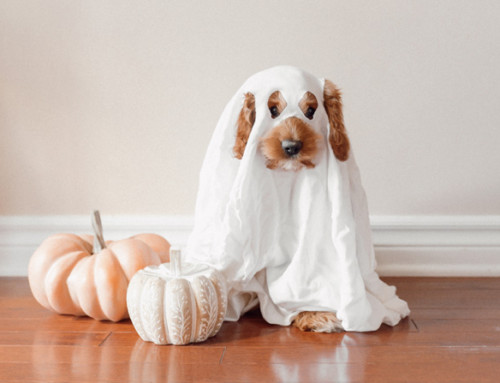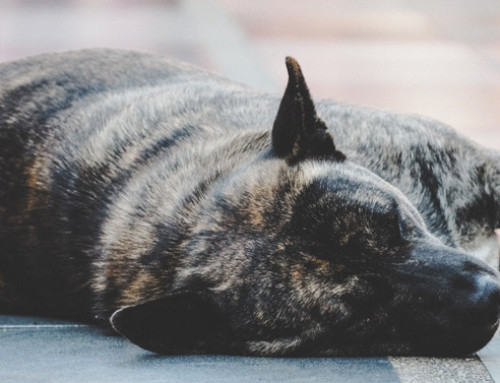Seeing your pooch attacked by another dog is scary stuff. Our first instinct is to rush to their aid and get stuck in to rescue your pet, but it’s important to keep a cool head and exercise caution.
Of course prevention is the best cure, so it is important to always be alert when you are out with your dog. Like when you have a child, you are aware of what is going on around you so that you can prevent your child getting into danger, it should be the same with your pet. Often we see people chatting on their phones with absolutely no awareness of what is going on with their dog, and what’s going on around their dog, so if scuffle breaks out, they would be totally unprepared.
Here’s what to do if the unthinkable happens and your dog has a scuffle in a public place. Please note that this is not intended to cover off a situation when your dog is in a life threatening situation. In that situation, we know that you will do whatever you can to save your pet. Not all attacks are of that nature, fortunately.
Don’t: Panic
It’s hard to say how you might react in a situation of crisis. Panic can be an unavoidable side effect of seeing someone you care about being attacked. Still, your energy impacts the way dogs behave, so it’s important you try and remain in control.
A dog that is angry or fearful and acting out in violence might be encouraged by your panicky behaviour. You’ll have more chance of disarming the situation if you can remain calm and focused. If you’re someone who is quick to panics you might try some meditation exercises to feel calmer generally. It will also help with your day to day dog training.
Don’t: Hold eye contact
A dog will respond negatively to held eye contact. Instead, try to claim your own space by making yourself big and remaining calm and assertive. If the dog tries to bite you, let it bite something on you that isn’t you, like your jumper, then slowly remove it. As a calm, rational human, you are always looking to de-escalate the situation, rather than escalate it.
If the dog is already attacking your dog, continue to make yourself big and formidable. If the dog sees an imposing figure looking over it, it’s more likely to flee.
Do: Know the signs of a dog ready to attack
Dogs rarely attack out of the blue. Usually there are signs the dog is planning on attacking. Is the dog exhibiting the following?
- Growling
- Baring Teeth
- Barking
- Snarling
- Lunging
If you see these signs you might want to retreat, slowly, without turning your back, and secure your dog close to you. This could be a dangerous situation for you and your dog. Remember, de-escalation is key. You don’t want to show fear or aggression. Instead, remain assertive, claim your space, but back away slowly to protect yourself and your pup.
Don’t: Try to pick up your dog
Reaching into a dog fracas can put you directly in harm’s way, but we know how hard it is not to do this, however bending down means you’re at greater risk of getting bitten or scratched. In times of stress, you need to be at full capacity to protect your dog and de-escalate the situation. So fight your urge to jump in and physically save your dog, unless you are strong enough to do it without putting yourself at risk.
Don’t: Expect your dog to act totally normal in the aftermath
After the altercation your dog with have lots of adrenaline running through their veins. They will be in a heightened state, and is likely to react in 3 ways: fight, flight or freeze. While you should soothe your dog and let them know you are here to look after them, you’ll want to be careful with sudden movements and handling them too much, as they may react unexpectedly towards you.
Do: Get the vital details
Most dog attacks end quickly. Try to remain calm, even after you’ve chased off the aggressive dog. Write down the following details:
- Date
- Time
- Location
Take out your phone and grab a few snaps of the area. Scour about and see if there are any security cameras near by. This information could move vital later on. If the offending dog is there with an owner, ask for their details as well.
Do: Get contact details of witnesses
Witnessing a dog attack is a horrifying experience. If anyone is around to see it happen, grab their contact details as well. Their perspective may help down the track, particularly if you pet is seriously injured or you need to give a statement to animal services.
Do: Take your dog to the vet
Even if your pooch looks fine, a visit to the vet is essential. Dogs are good at hiding pain, and you don’t truly know what injuries they might be carrying until you’ve let a professional take a look.
Do: Contact your council
If the attack happens during regular hours, contact your local council, otherwise contact the police. It’s important to note that most laws regarding animal attacks are controlled at a State and Territory level, so rules may differ depending on where you live. You may also wish to seek independent legal advice and contact your pet insurer to make claims on medical procedures.
Recuperating after a dog attack
Even if your pet isn’t physically injured after a dog attack, the stress of violence can affect their perception of the world and their future interactions with other dogs and people. With that in mind, you may need to do some recuperative training and re-socialisation so you dog feels calm and happy out and about in the world. The Nest has a handy guide for recuperating your dog.
Start with a walk
Clip on your dog’s leash and take them for a walk around the neighbourhood. Head to the local dog park and sit some distance from the other dogs. An elevated position, like at the top of the stairs or a small hill is preferred. That way your dog has a good view of other dogs running around.
While you sit on the hill, gauge your dog’s reactions to other dogs. Do they get anxious? Try praising them, giving them attention and treats. While their focus is on you, they will be happier and calmer in the environment.
Catch up with friends
Take your dog to meet and greet some other pooches they know and like. Do it in a public or neutral area and gauge your dog’s reactions for signs of fear and anxiety. Use gentle coaxing and treats to re-introduce them.
Slowly coax them back into social situations
It’s best to avoid the area where your dog was attacked. That way, there’s less likelihood of repeat violence. Instead, with your pooch on leash and lots of praise, allow them to greet more dogs, slowly giving them more encouragement and freedom to socialise.
Remember: safety first
Whether it’s a confrontation with a growling dog or putting an end to a dog attack, always prioritise your safety and that of your dog. They rely on you, so keep yourself safe, remain calm, and focus on defusing the situation as quickly and smoothly as possible. And always be on high alert.







This is all Do and Don’t before and after – what do I do WHILE my dog is being attacked? You see videos on YouTube of this happening and there is not always a warning sign from the attacking dog, they just cross paths and then in a second, one’s got his jaw locked on the other. So what do you do WHILE your dog is being attacked?
Thanks for your suggestion Matt – we will explore this topic as well.
“So fight your urge to jump in and physically save your dog, at least until the situation has calmed down.” — when the situation has calmed down your dog is DEAD — that is usually when the aggressive dog stops attacking – when yours is no longer moving.
” Try to remain calm, even after you’ve chased off the aggressive dog. Write down the following details:” — chased off the aggressive dog? With what? Do you really think you can ‘chase off’ a large 70kg dog? Writing down details of the owner? Are you kidding me? Why on earth would the owner give you any details?They are not legally obliged to do so.
“If the attack happens during regular hours, contact your local council, otherwise contact the police.” — you must be joking. no police will do anything about your dog being bitten to death.
Do you have any idea what you are talking about? Do you know a large dog can kill a smaller dog within seconds?
Hi Paul, thank you for your feedback. I appreciate what you are saying when there is an attack with a very aggressive and large dog, and we certainly do appreciate that a very large dog can cause serious injury and even death to a small dog – but the majority of attacks are not in this category – thankfully. If you have special knowledge on how to deal with a very large, and very aggressive dog, please let me know and we would be pleased to upadate the article, and give you credit for that. Kind regards, Liz
My Cairen terrior was attacked by a pit bull! The pit licked it’s lips when my dog and I were getting ready to walk past.bin an instance,the pit twisted out of his collar and leash and had my dog by the neck! I reached down and picked up my dog and was holding her trying to get the pit to let go. I’m sure it was only a couple of minutes even though it seemed like 30! It may have been helpful to know how to get the pit to let go, like kick in groin area or ribs to make it gasp for air. Luckily my dog survived. Two wounds that needed about ten stitches total. She is very skittish around kids and big dogs. I am same around this breed now.
What a scary experience – good to know that your dog survived, but understandably traumatised.
My dog atracked before strays but they go away without much harm they were protecting their space then attacked by a Drahthaar who used for hunting. My dog is a 13 kg mutt and she shook him by the neck foa for about 10 mins. I’m a small girl I had no power to break them off. People run to help and spill 4tl water on him he still didn’t let go then his owner picked him up and I picked mine and finally he let go. Thankfully my dog has a thick neck hair and dog was 8 so it wasn’t really bad. Didn’t require stitches. After that I learned you need to lift the legs of the attacking dog (told by vet). But be careful it can go attack you. Or you can punch the nose or use a something makes a really loud sound like air horn. My dog scared to hell and growl around dogs now sadly. Since we have stray dogs here I’m walking with a cane or wood to scared them so I can keep both my dog and other dogs. Walks are really stressful now. Hoping the day this will end.
Our small Lhasa Apso was attacked on Saturday by a huge dog and I agree, all the Do’s nad Dont’s are fine to write while calm but when your dog is being mauled, there is no chance on earth you would remain calm and not get between them. Your instincts take over, I picked my dog up straight away and it is what saved her life, we also got in between them, wersetled the dog and prised its jaws open to released her. I would have killed the other dog in order to save mine.
You are saying thankfully there arent a lot of large dogs killing small ones, but you are incorrect, there are so many and it is on the rise as there is no punishment for irresponsible dog owners with out of control dogs. Nothing will happen to them unless the law has changed. Telling an arogant dog owner who maintains there dog is ‘fine’ to muzzle it will not work.
The owner of the dog that attacked ours was v abusive and laughed at the situation and wasnt intimidated by the Police at all, as he knew nothing would happen to him. Our poor dog is traumatised and so are we but he is free to walk about with an aggressive dog as he pleases. It will attack again and that is definitely not the first time it has attacked as they werent shocked at all. It will kill someones pet and they dont care.
No pet owner would stand by and watch their dog being attacked.
Yes that sounds like a terrible thing to happen to your dog. Thank you for your feedback. Liz
Utter rubbish. My 19 years old dog was attacked by a Staffordshire Bull Terrier which was loose. The owner couldn’t care less about what had happened. He proceeded to then intimidate my partner with fowl aggressive language and threatening actions. I have been interviewed by the police who have stated, in the eyes of the law my dog is seen as a ‘piece of furniture ‘. Guide dogs and police dog’s are classified differently.
I now have a mounting veterinary bill for over £410 and mounting and a pet who we still don’t know if she will make it.
Sorry, this is silly advice, if another dog attacks my dog to the extent that I fear for its life I will drop kick that dog over a house – a brute force kick to a violent dogs stomach/underside area will do it. I have a dog trainer friend who says last resort ram a finger up its backside LOL – he’s done it with a violent dog and it ran for its life. Few dog owners are about their own safety when their best friend is being attacked.
Hi Naomi, – you will see that the article does indicate that it is not intended to cover off what you would do in a serious situation. We understand in that situation, it’s all about whatever it takes.
Have been in the situation twice both occasion dogs were staffies attacking my dog. My reaction was a smart boot into the staffies stomach ended the attack. You only have split seconds to intervene . Both occasion aggressor ceased .
All these suggestions are good, & I know there are a few negative comments, but most people are searching for advice following an attack. It can be very stressful, but remaining calm is the best advice, no matter what people suggest when you are stressed everything changes, just stay safe.
My small Yorkshire Terrier was attacked 2 weeks ag. The owners would not give me their details only there ftiens number
I sent COPIES of my vets bill they then gave jd an email Ddress I sent COPIES to that heard nothing since. I rang the police they were not interested they rang the mobile number I gave them a police dog handler rang je back and said from what both parties said the dog was playing mine was on lead theirs was not the other owners comment was oh theres no blood and that she hadnt bitten my dog her dog did yes her dog her responsibility. this is tewkesbury police by the way I took my yorkie to tte vets she had 3 small puncture wounds had a pain injection and antibiotics. I am struggling every day getting her out I gave to carry up my path up an alley as soon as we get to the main road to cross over she then becomes calmer. The attack did not happen by my home and nothing uo do with the way we go. In the evenings she will not go and hides under my cushions on my bed. Sges even frightened if my back garden which she used to love hardly barks in her garden unless I say theres x cat in her garden. My poor little doggy changed over night. There should be fines for dog owners of not so pleasant dogs. Some people SHOULD NOT GAVE DOGS.Also when are owners going to be fined when walking public footpath and their dog us off the lead???